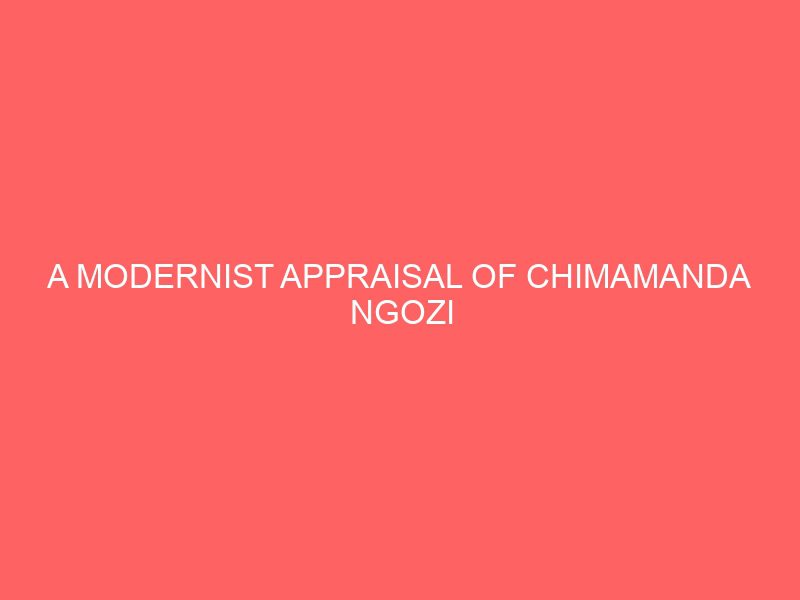Description
CHAPTER ONE
GENERAL INTRODUCTION
1.1 Background to the study
Literature is a fictional composition in language (words) which tells stories that mirror real life situations to advocate ideas and express emotions or feelings. Literature mirrors life and is a product of the society. It reflects the social, cultural, economic and other aspects of human endeavour. As a result of what it is, literature has been used over the years to express people?s experiences, beliefs and opinions.
Literature has evolved through many stages from the Golden Age of civilisation during the classical era to the present time. The first stage of literature which was the classical stage was a secular era made up of the period of Greek and RomanCivilisations. Literature flourished during this time as it was considered a way of life of the people with stringent rules guiding literary creativity. During the medieval stage, the establishment of a religious state led to a decline of western civilisation and creativity was greatly suppressed. Little was produced and even this little came in form of anonymous pieces that bore no authorship as authorship was frowned at as a way of seeking earthly glory. The end of the medieval period was the rebirth of learning known as the renaissance. This brought about the exploration of the classical knowledge since the medieval period had nothing to offer. The writings of this time were named Elizabethan writings.
The Restoration Age succeeded the Elizabethan Age which was characterised by neoclassicism where the works of the period were modelled after classical writers. The Restoration Age emanated in 1770 and lasted till 1848. The period was noted for literary style known as romanticism. The write-ups of this period were directed towards glorification of nature and effects of man?s action on nature. The writers of this period emphasised originality.
Around 1830, there was the Victorian Age which brought about realist style of writing. The period lasted till roughly 1900 and the writings of the period reflected social problems such destruction of man, unemployment, criminal activities and social stratification brought about by the industrial revolution. All the above discussed eras and styles run into one another with each era imbibing one or two features from other eras? style of writing.
Towards the end of the nineteenth century, globalisation and industrialisation coupled with the first and second world wars brought a new literary style into existence. This was a sharp breakaway or departure from the earlier trends such as classicism, medievalism, neoclassicism, romanticism and realism. This new style was called modernism. The era placed emphasis on newness hence the production of unique literature not just in content but especially in style. The world became a global village as a result of industrialisation, globalisation and the first and the second world wars. People began to question the future of humanity and wonder what was becoming of the world. Writers therefore reacted to these questions by reflecting modernist sentiments in their works. Gone was the romantic period that focused on nature and being. Gone also was the realist period where there was a near journalistic style of literary creativity. The modernist literary movement was driven by a conscious desire to overturn traditional modes of representation and express new sensibility of their time. Instead of progress, the modernist saw decline of civilisation. Instead of new technology, he saw cold machinery and increased capitalism which alienated the individual and led to loneliness. The era, through its features, rejects the nineteenth century?s optimism. It also presented a profoundly pessimistic picture of a culture in disarray. All these were reflected in the literary creativity of the timeas literature mirrors life. But the Modernist Era did not imply that development had stopped to manifest in literature. This is because today, it is possible to hear people talk about post modernism and other trending developments in the field. However, this study is interested in finding out if trends or literary style considered as past can still be found in contemporary works that is why Achebe?s Anthills of the Savannah and Chimamanda?sPurple Hibiscus have been selected.
1.2 Statement of problem
Many who have made Chimamanda?s and Achebe?s works the subject of their study dwell on the sociological, historical, political, feminist, political, cultural and even material dimensions, not many, if there is any, have been done on the modernist aspect of these works especially Purple Hibiscusand Anthills of the Savannah. That is why in this present research, the researcher intends to subject the works to the modernist approach to determine if the findings could be similar to those obtained when other critical approaches are used especially considering the fact that the two novels are 21st century novels while modernism is a 20th century literary trend.
1.3 Aims and objectives of the study
The aim of this study is to analyse the selected novels based on the features of modernist writing. Specifically, the study intends to; identify the modernist aesthetics in the selected novels, ascertain the extent to which the features of modernist writings are manifested in these novels and to examine whether these novels imbibe the practice of the earlier eras which the modernist era intends to break away from. This study also intends to show that modernism is discernible in many contemporary African novels using the selected texts as a representative sample.
1.4 Significance/Relevance of the Study
Chimamanda is a new voice of Nigerian literature whose work has gained international recognition and Achebe was a literary titan in African literature. Writers of this nature deserve all the attention they can get from scholars. This research is therefore necessary because it will give Achebe and Chimamanda the attention they deserve and formerly situate them within the fold of modernist writers.
Furthermore, this research work is significant because it will educate researchers and scholars on the relationship between literature and society as it discusses how society and history are basis of literary works.
This research will also encourage researchers to dwell on other aspects of the selected novels that have not been worked on. This is important because some people tend to feel that a contemporary novel or work of art can only be analysed using a contemporary critical approach. Proving such thing incorrect will help other scholars to attempt the application of several other hitherto ignored critical trends to all manner of works leading to more enterprising scholarship.
This study will establish the fact that a literary work in the contemporary age can be situated or can have its settings in preceding eras thereby encouraging researchers to subject other 21st century write-ups to earlier critical insights. This will in turn help to widen the scope for the exploration of recently produced works of art.
This research will furthermore fill a research gap as no work has been done on the modernist aspects of these novels before, thereby providing reference material for researchers.
The final and most important relevance of this study is that it will help to earn the researcher a B.A (Hons) degree in English. This is because the research work is being carried out as a necessary requirement for the award of B.A (Honours) Degree in English of the Federal University Dutsinma.
1.5 Scope of the study
The study covers two novels which are ChimamandaNgoziAdichie?s Purple Hibiscus andChinua Achebe?s Anthills of the Savannah. Chimamanda?sPurple Hibiscus is a310 paged novel which has four unequal sections captioned, ?Breaking Gods: Palm Sunday?, ?Speaking with our Spirits: Before Palm Sunday?, ?The Pieces of Gods: After Palm Sunday?, and ?A Different Silence: The Present?. The first and last sections have one chapter each, the second section has eleven chapters and the third section has three chapters; bringing the total to fifteen chapters. Achebe?s Anthills of the Savannah is a 233 paged novel which has a total of eighteen chapters with different captions. The novels will be studied using the modernist critical approach.
1.6 Limitations of the study
A research work coming into reality is not a day job as there are factors that restrict and at times delay the progress and quick completion of the work. Gathering of materials was very hectic as the university library does not have materials on modernism hence the researcher had to travel to other institutions? libraries for materials. This was also discouraging as the researcher was not allowed access to reference materials as a result of absence of a letter of Introduction and in institutions where the letter was not demanded for, limited materials were gotten. More so, the current economic state of the country rendered the researcher financially handicapped.
1.7 Definition of terms
Literature
Literature according to the Oxford Advanced Learner?s Dictionary is pieces of writing that are valued as works of art, especially novels, plays and poems.
Modernism
Modernism is simply referred to as modern ideas and methods. Oxford Advanced Learner?s Dictionarydescribes modernism as a style and movement in art, architecture and literature popular in the middle of the 20th century in which modern ideas, methods and materials were used rather than traditional ones.
Criticism
According to the Oxford Advanced Learner?s Dictionary, criticism is the work or activity of making fair, careful judgements about the good and bad qualities of somebody or something, especially books, music, etc.
Society
Wikipedia defines society as a group of people involved in persistent social interaction, or a large social grouping sharing the same geographical or social territory typically subject to the same political authority and dominant cultural expectations.
History
According to the Oxford Advanced Learner?s Dictionary, history are the past events concerned in the development of a particular place or subject etc.
Novel
A novel according to the Oxford Advanced Learner?s Dictionary is a story long enough to fill a complete book, in which the characters and events are usually imaginary.







